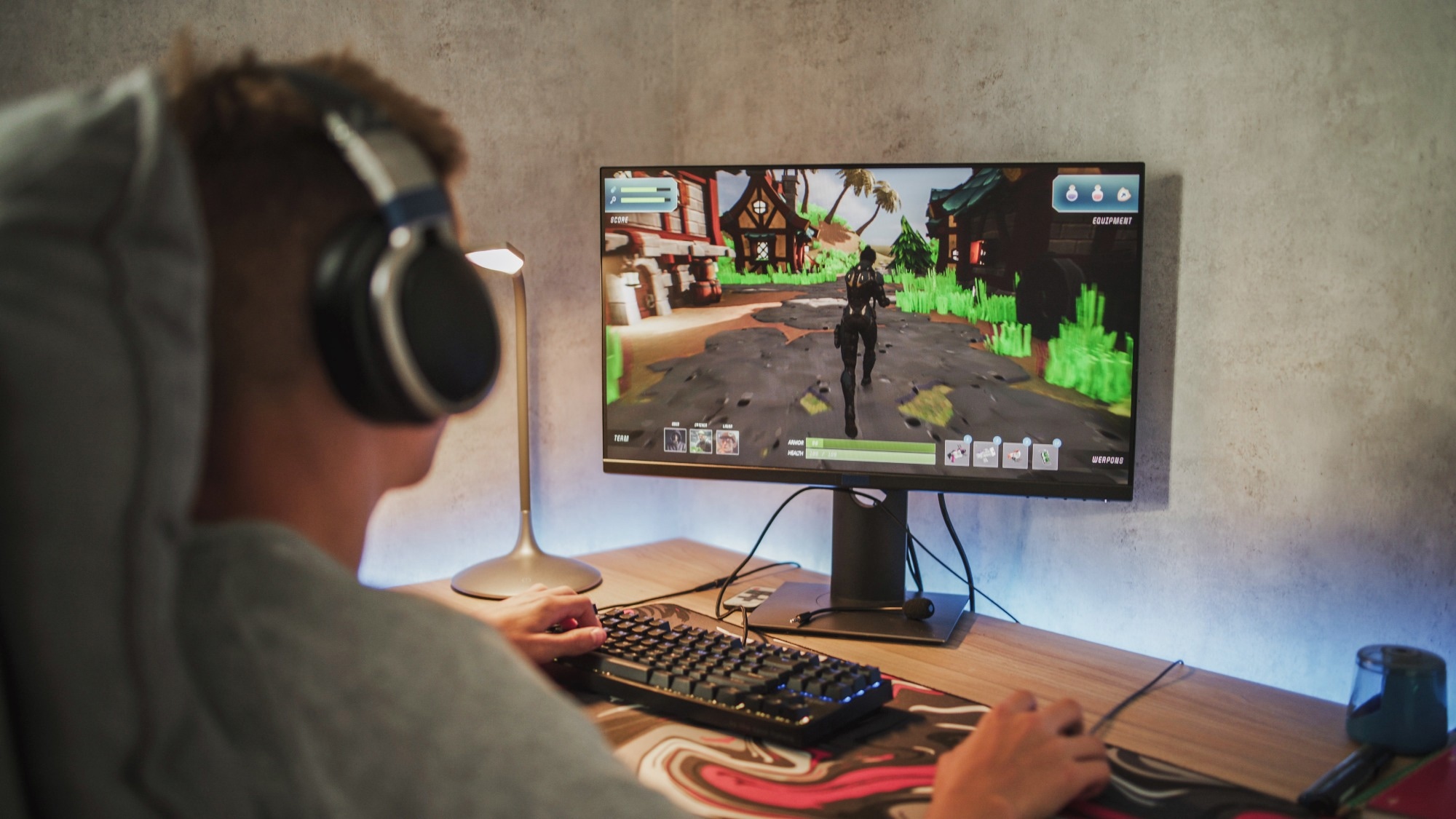MRI scans reveal frequent action gamers show measurable differences in brain structure, which may help explain links found in earlier studies between gaming, attention, and visuospatial skills.
 Study: Action Video Gaming Enhances Brain Structure: Increased Cortical Thickness and White Matter Integrity in Occipital and Parietal Regions. Image credit: Frame Stock Footage/Shutterstock.com
Study: Action Video Gaming Enhances Brain Structure: Increased Cortical Thickness and White Matter Integrity in Occipital and Parietal Regions. Image credit: Frame Stock Footage/Shutterstock.com
In a recent article in Brain Science, researchers investigated whether long-term exposure to action video games is associated with changes in brain structure. They found that gamers showed greater cortical thickness in parietal regions (and near-significant differences in the postcentral gyrus), and stronger occipitoparietal connectivity than non-gamers. However, they caution against inferring that gaming causes these changes.
Background
Video gaming is a global phenomenon, with over 3.3 billion players generating over USD 180 billion annually. Beyond entertainment, gaming has been linked to improvements in attention, reaction speed, decision-making, and visuospatial skills.
Structural brain changes may underpin these benefits, as previous neuroimaging studies report alterations in cortical thickness and white matter integrity among frequent players. These findings suggest that gaming experience may be associated with differences in the cognitive and motor demands of gaming. However, concerns remain about possible adverse effects such as exposure to violent content, obesity, and addiction.
Cortical thickness refers to measuring the width of the brain's gray matter, which indicates the complexity of nerve cell connections (called dendritic complexity) and the organization of points where these cells communicate (called synaptic organization). Increased cortical thickness has been associated with better abilities in tasks that require understanding space and movement, such as visuospatial and sensorimotor performance.
Because action video games require rapid spatial information processing and precise motor coordination, regions like the parietal cortex may show differences. However, gray matter measures alone are insufficient; white matter connectivity is crucial for efficient communication between regions.
Diffusion imaging is a brain scan method that tracks the movement of water molecules through brain tissue, allowing researchers to study the microscopic structure of white matter (the brain's communication pathways). Quantitative anisotropy (QA) is a specific measurement from diffusion imaging. It reflects how strongly water movement aligns with nerve fibers, making it a reliable marker of the strength of connections between brain areas.
About the study
Researchers investigated whether action gaming experience is associated with both greater cortical thickness and stronger white matter pathways in visuospatial processing networks, particularly within the dorsal stream.
They recruited 46 participants, comprising 27 video game players who spent five or more hours per week on action games genres such as first-person shooters (FPS), real-time strategy (RTS), multiplayer online battle arena (MOBA), or battle royale (BR) for at least a year, and 19 non-video game players who had played for less than half an hour per week over the past two years.
Participants completed questionnaires to determine group classification. All passed a color vision test, provided informed consent, and received compensation. Researchers collected magnetic resonance imaging data and high-resolution anatomical images.
For white matter analysis, scientists combined diffusion imaging data with a method called q-space diffeomorphic reconstruction to create detailed maps of nerve pathways in the brain.
Tractography, which maps the routes of these pathways, was performed by placing starting points (called seeds) in brain regions believed to be important for visuospatial processing, specifically, the inferior and superior parietal lobules and the superior occipital gyrus.
Connectivity strength was measured using QA. Statistical comparisons between groups employed multivariate analysis of covariance (MANCOVA) for cortical thickness and Wilcoxon rank-sum tests for connectivity, with Holm–Bonferroni correction applied.
Key findings
The study revealed significant structural brain differences between video and non-video players. For gray matter, gamers exhibited greater cortical thickness in four right parietal regions: the inferior parietal lobule, superior parietal lobule, precuneus, and supramarginal gyrus, with an additional near-significant effect in the postcentral gyrus.
These areas are central to visuospatial attention, decision-making, and sensorimotor integration, and the differences remained significant after correction for multiple comparisons. White matter analyses also highlighted connectivity differences.
Tractography demonstrated higher QA values in gamers, specifically in dorsal-stream pathways linking the right superior occipital gyrus with the right superior parietal lobule and the left superior occipital gyrus with the left inferior parietal lobule.
These enhanced QA values suggest greater structural integrity or connectivity strength in occipito-parietal tracts among habitual gamers.
The findings indicate that frequent engagement in action video games is associated with thicker parietal cortices and stronger occipito-parietal white matter connectivity. These patterns align with the visuospatial and attentional demands of action gaming, although the cross-sectional design prevents establishing causality.
Conclusions
The findings suggest that long-term action gaming is linked to greater cortical thickness in right parietal regions (and possibly in adjacent sensorimotor cortex) and stronger occipito-parietal connectivity, which is central to visuospatial processing, attention, and motor planning.
These structural differences are consistent with prior evidence that gaming supports faster decision-making and enhanced visuomotor integration. Importantly, the results provide a plausible neural substrate for previously observed behavioral advantages in gamers.
However, the study is limited by its cross-sectional design, reliance on self-reported gaming history, modest sample size, and focus on structural rather than functional or behavioral measures. Furthermore, the observed differences may reflect pre-existing traits rather than adaptations caused by gaming. Tractography’s technical constraints also limit interpretability.
Despite these limitations, the study highlights the potential of action games as cognitive training tools, especially for populations with visuospatial or attentional deficits. Future longitudinal, multimodal studies are needed to clarify causality, genre-specific effects, and the translation of structural changes into cognitive benefits.
Download your PDF copy now!
Journal reference:
-
Mukherjee, C., Cahill, K., Dhamala, M. (2025). Action Video Gaming Enhances Brain Structure: Increased Cortical Thickness and White Matter Integrity in Occipital and Parietal Regions. Brain Science. DOI: 10.3390/brainsci15090956. https://www.mdpi.com/2076-3425/15/9/956